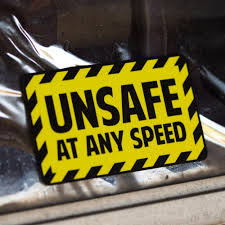July, 2024
now browsing by month

Wall Street Investigates Auto Pilot
Wall Street Journal
Investigates Tesla Autopilot
An investigative report by the Wall Street Journal (WSJ) on Tesla crashes caught our eye this week. The report used crash data submitted by Tesla to the National Highway Traffic Safety Administration (NHTSA) and cross-referenced it with state accident reports. All told, WSJ evaluated 222 crashes involving Teslas.
Of those 222 crashes, 44 occurred when a Tesla, operating in Autopilot, “veered suddenly.” An additional 31 happened when the vehicles “failed to stop or yield.” Much of the report focuses on Tesla’s use of camera technology to identify surroundings on the road. Tesla relies heavily on cameras to support its automated driving system. However, other manufacturers of autonomous vehicles use a combination of technologies, including cameras, radar, and LiDAR (Light Detection And Ranging).
Beyond the hardware issues, the report also cited slow updates to the algorithm used to support the Autopilot system. While all video footage taken during these crashes is transmitted to Tesla, they often cite protecting their proprietary technology as a reason to keep the footage from the public. In reports to NHTSA, much of the data is redacted from public view. In analyzing some of the 222 crashes in the story, the Wall Street Journal used mechanics and hackers to download videos from crashed Teslas. This process requires physically removing the main computer from the vehicle, accessing its data, and pairing it with the video images. [To see how they do it, click the image above.]
The spotlight on Tesla and its Autopilot system is growing hotter. Last summer the Washington Post did their investigation into Tesla crashes. That story, titled: “The Shocking Toll of Tesla’s Autopilot,” included the infamous quote from former NHTSA Safety official Missy Cummings, “It’s very dangerous for motorcycles to be around Teslas.”
While media reports like this may be news to many in America, it’s not news to bikers. The Motorcycle Riders Foundation (MRF) has been and will remain steadfast in our engagement and focus on this issue.
Stay vigilant!
Ride Safe and Ride Free

Unsafe at any Speed
|

Less Money in More Money out
Less Money In
More Money Out
Late last month, the Congressional Budget Office (CBO) released its projections on spending and revenue for government programs over the next decade. Included in the report was the financial outlook for the Highway Trust Fund. The Highway Trust Fund is the main source of money used to fund government surface transportation and infrastructure projects. The money in the Highway Trust Fund comes through federal fuel taxes collected on every gallon of gasoline or diesel sold in the U.S.
It is a simple idea, those who use the roads help pay for the roads when they fill up their gas tanks. Unfortunately, the funding system is starting to break down, threatening the ability to maintain our roads, bridges, and infrastructure.
The recent CBO projections show an almost $300 billion shortfall over the next decade. One of the main reasons for the shortfall is that these projections factor in recent emission rules, expected to go into effect over the next 10 years. These rules are intended to push more electric vehicles onto the roads and reducing demand for gasoline by one-third. Less gasoline sold means less revenue for the Highway Trust Fund. Mix that with the increased cost of building and maintaining our transportation network and a storm is brewing.
This funding deficit is another example of the unintended consequences of the attack on the internal combustion engine. At some point, lawmakers will be forced to address the funding gap. Rest assured, when that happens, the Motorcycle Riders Foundation will be there. The MRF will fight to ensure bikers receive fair treatment and our rights defended, regardless of the fix proposed by Congress.
Ride Safe and Ride Free

 D5 Creation
D5 Creation